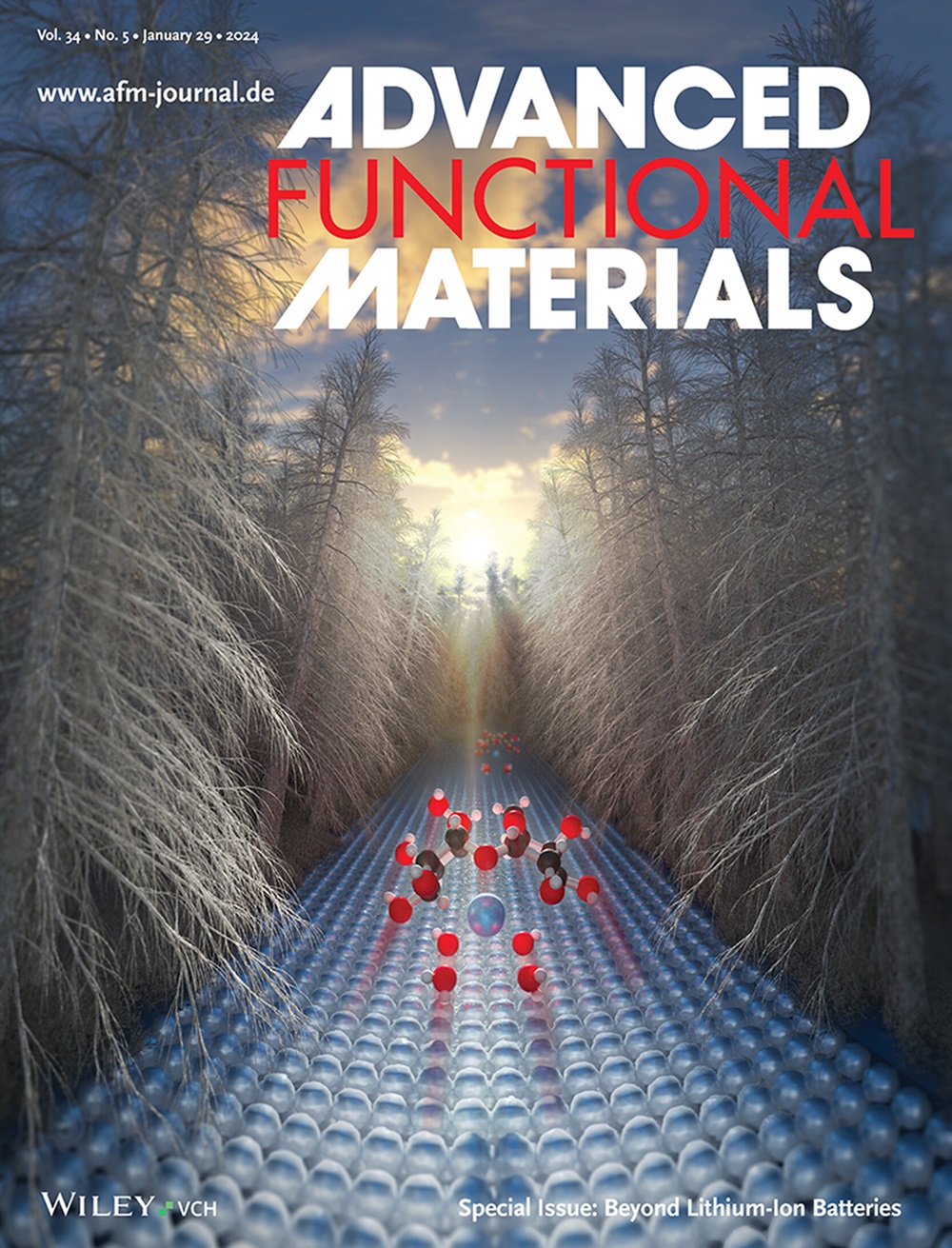揭示开放金属位及其盖层配体在mof稳定性和液相分离中的作用
IF 18.5
1区 材料科学
Q1 CHEMISTRY, MULTIDISCIPLINARY
引用次数: 0
摘要
金属有机框架(MOFs)的稳定性对其实际应用至关重要。开放金属位点(OMS)是各种应用中不可或缺的活性位点,对稳定性也有显著影响,但人们对它们的作用了解得还不够。本研究对 MOF-808 进行了研究,MOF-808 是一种锆基 MOF,每个簇具有六个开放金属位点,与气态水相比,它在液态水中具有更高的稳定性。甲酸在 OMS 上的配位显著增强了水稳定性,而重结晶实验则阐明了气态水中的不稳定性机理。热稳定性取决于 OMS 上封接配体的分解温度。在液相吸附高价值生物油化合物creosol的过程中,吸附结果表明封端配体的极性会调节孔隙的亲水性/疏水性,从而影响吸附选择性。值得注意的是,用五氟苯甲酸封端的 MOF-808 在吸附过程中实现了 100% 的选择性孔隙占有率。这项研究强调了 OMS 对 MOF 稳定性的关键作用,并强调了封端配体在提高稳定性和调整吸附特性方面的作用。它强调了非结构配体修饰是提高 MOF 性能的有力策略,从而拓宽了它们在具有挑战性的环境中的应用潜力。本文章由计算机程序翻译,如有差异,请以英文原文为准。

Unraveling the Role of Open Metal Sites and Their Capping Ligands in MOFs Stability and Liquid-Phase Separation
The stability of metal–organic frameworks (MOFs) is crucial for their practical applications. Open metal sites (OMS), essential active sites in various applications, also significantly impact stability, yet their role remains insufficiently understood. This study investigates MOF-808, a zirconium-based MOF with six OMS per cluster, revealing its higher stability in liquid water compared to gaseous water. Coordination of formic acid at OMS notably enhances water stability, while recrystallization experiments elucidate the mechanisms of instability in gaseous water. Thermal stability is determined by the decomposition temperature of capping ligands on OMS. In liquid-phase adsorption of high-value bio-oil compound creosol, uptake results demonstrate that capping ligand polarity modulates pore hydrophilicity/hydrophobicity, affecting adsorption selectivity. Remarkably, MOF-808 capped with pentafluorobenzoic acid achieves 100% selective pore occupancy during adsorption. This study highlights OMS as critical to MOF stability and emphasizes the role of capping ligands in improving stability and tuning adsorption properties. It underscores nonstructural ligand modifications as a powerful strategy to enhance MOF performance, broadening their application potential in challenging environments.
求助全文
通过发布文献求助,成功后即可免费获取论文全文。
去求助
来源期刊

Advanced Functional Materials
工程技术-材料科学:综合
CiteScore
29.50
自引率
4.20%
发文量
2086
审稿时长
2.1 months
期刊介绍:
Firmly established as a top-tier materials science journal, Advanced Functional Materials reports breakthrough research in all aspects of materials science, including nanotechnology, chemistry, physics, and biology every week.
Advanced Functional Materials is known for its rapid and fair peer review, quality content, and high impact, making it the first choice of the international materials science community.
 求助内容:
求助内容: 应助结果提醒方式:
应助结果提醒方式:


